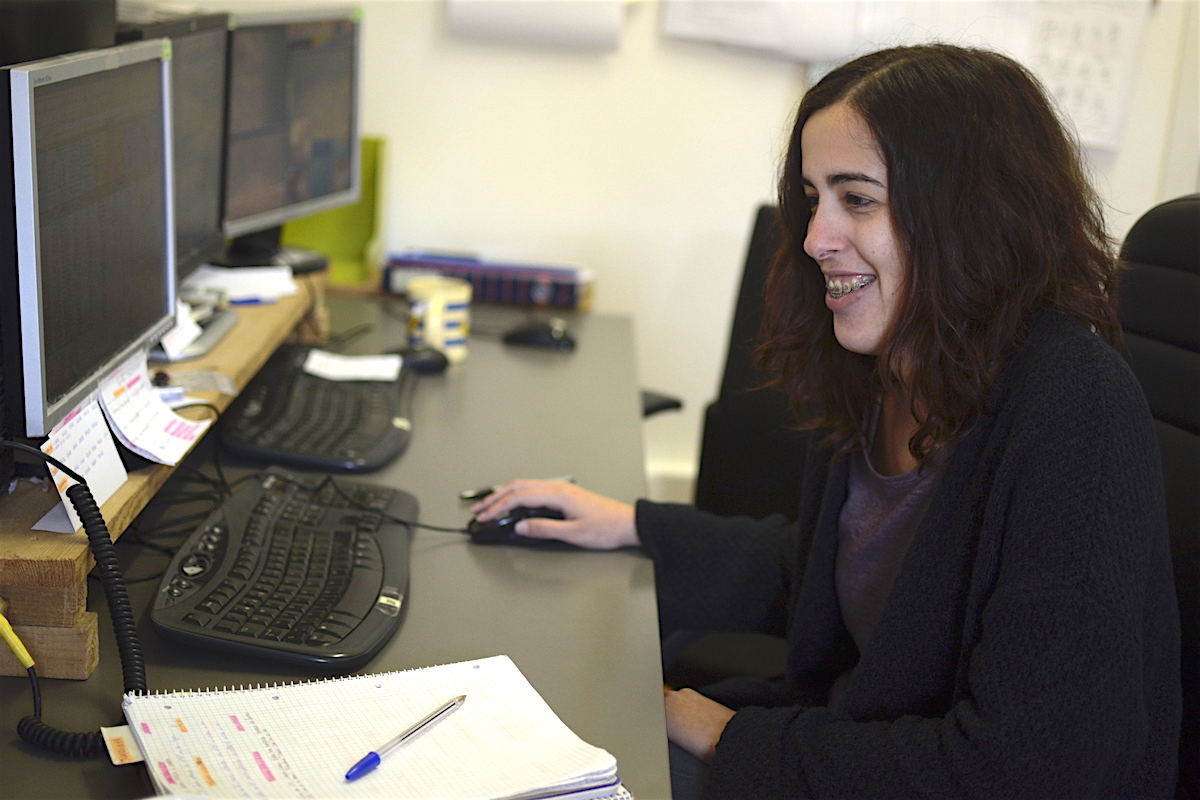Marta Cabaça, 28, from Lisbon, is member of the surveillance team at CNRLI since February 2016.
Marta always knew she would work with animals. This certainty grew stronger each time she saw wildlife documentaries on TV at weekends. She has a Biology degree and she was interested in animal behaviour in order to know why and how animals do what they do.
In summer 2015 she was unemployed. “As I always had a great interest in conservation and love for animals, felines in particular, I decided to apply myself to the centre as a volunteer. Fortunately I was accepted. I liked it so much that I asked to stay another three months, till the end of January. Then there was an opportunity to become part of the ethology team. I accepted it with great joy.”
Marta is at CNRLI, in Silves to understand better “our cat” and try to help it return to its natural habitat. “How do you say no to such an opportunity? Impossible, I should say.”
Before coming do CNRLI, Marta knew the lesson by heart. “I knew this is a feline at the brink of extinction, that it’s threatened by habitat fragmentation, by the increase of human presence, illegal hunting and decrease of wild rabbit populations.”
However, she was surprised by this feline with beards. “The first thing that surprised me the most when I arrived here was the size of the animal. I must say I had imagined a bigger feline. I was truly surprised when I had the opportunity to see a live lynx here at the centre and to realize it is an animal as high as our knee. Attention, this is not a reason to less respect it, but I admit that, because of my admiration for the animal, I had imagined a Goliath.”
And neither was she expecting that the Iberian-lynx was so similar to her own cat. “Sometimes I see a lynx doing certain things and I think ‘hey, my cat does this. I think that when we are in the presence of an animal we admire and we don’t know too well, we are always waiting for something fantastic and astonishing. In fact, lynx are just like that, but more because of the normality of their behaviours. As cats, lynx like to play with cork balls, lie at the sun, high places and if there is a suspended bed, it is wonderful!”
The best part of being a member of the surveillance team at CNRLI is “to work and learn with the Iberian-lynx and with those who work here.” I have no direct contact with the animals but, nevertheless, I watch over them eight hours a day and this allows me to learn a lot about their behaviour and different personalities.” It is also very grateful to follow the cubs since the moment they are born, to watch them grow and develop their personalities until the moment they are released in nature, she says.
“And I am very proud to know that I have an active role in the Iberian-lynx conservation and that I am helping it in any way I can. Because I really want this species to prosper.”
In her opinion, the most difficult times are the situations she cannot control, for example, the death of a cub or a poisoned lynx. “I am very sad, but I also understand there will always be situations out of my control and I have to focus myself on what I can actually do to help.”
And then there are the schedules… “Sometimes it can be boring to have eight hours rotating shifts. Obviously, the lynx don’t care if it’s Easter, Christmas or holiday. They are always here and therefore you too. But honestly, for me this is the least. It is a ‘sacrifice’ I’m happy to make for them.”
[divider type=”thick”]The Birth of an Iberian-Lynx
A team from Wilder has been at CNRLI for two days on March 2015. In this series we show you how is it to work at this centre and all the people who take care of this endangered species.



